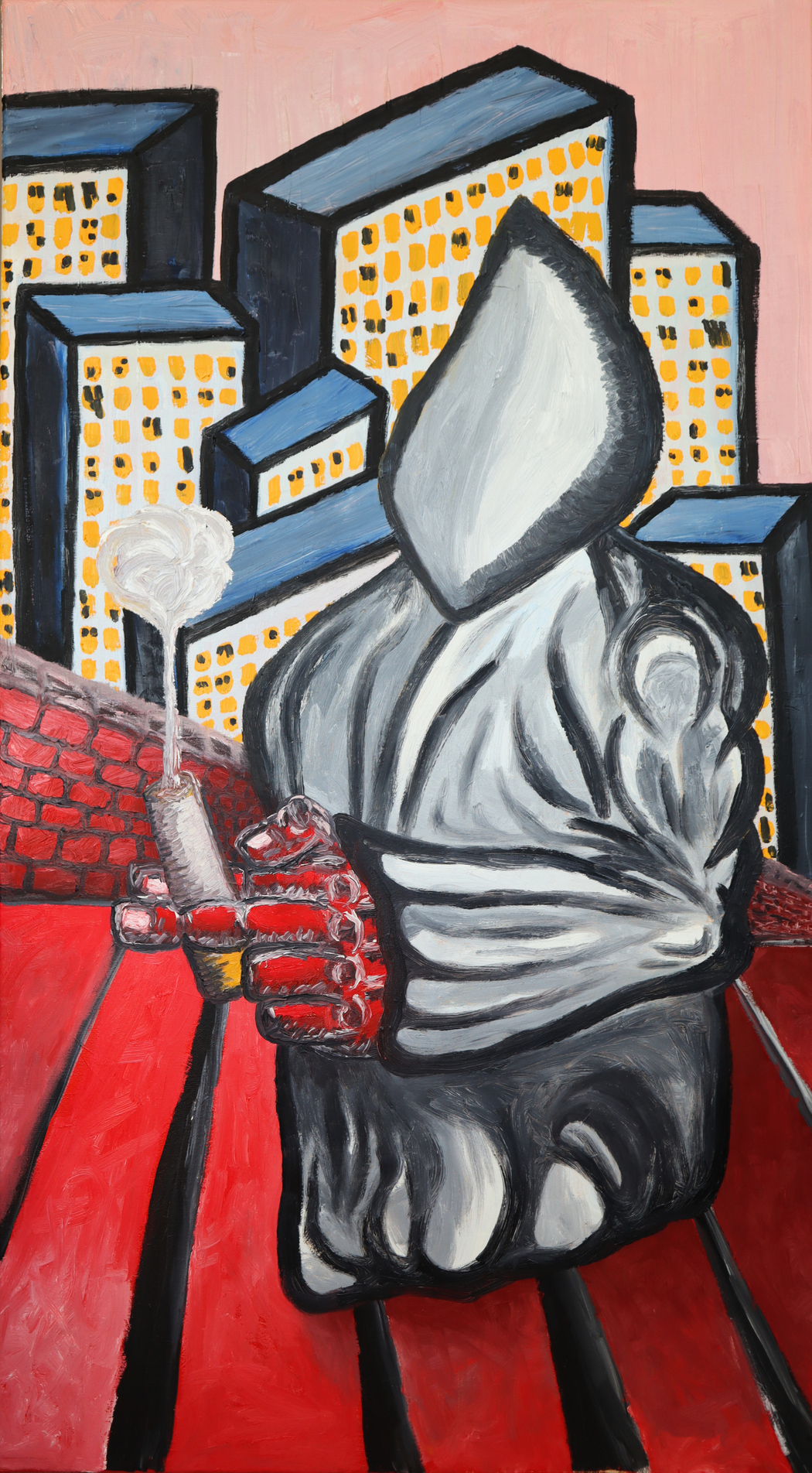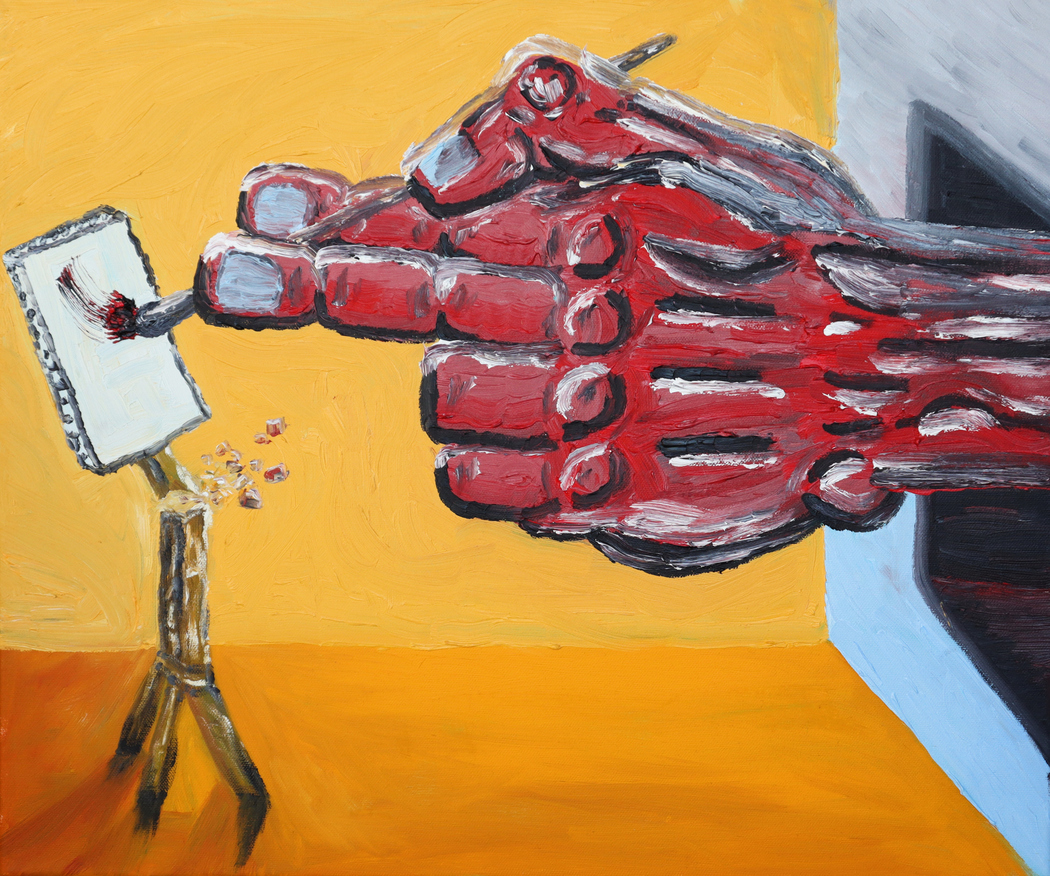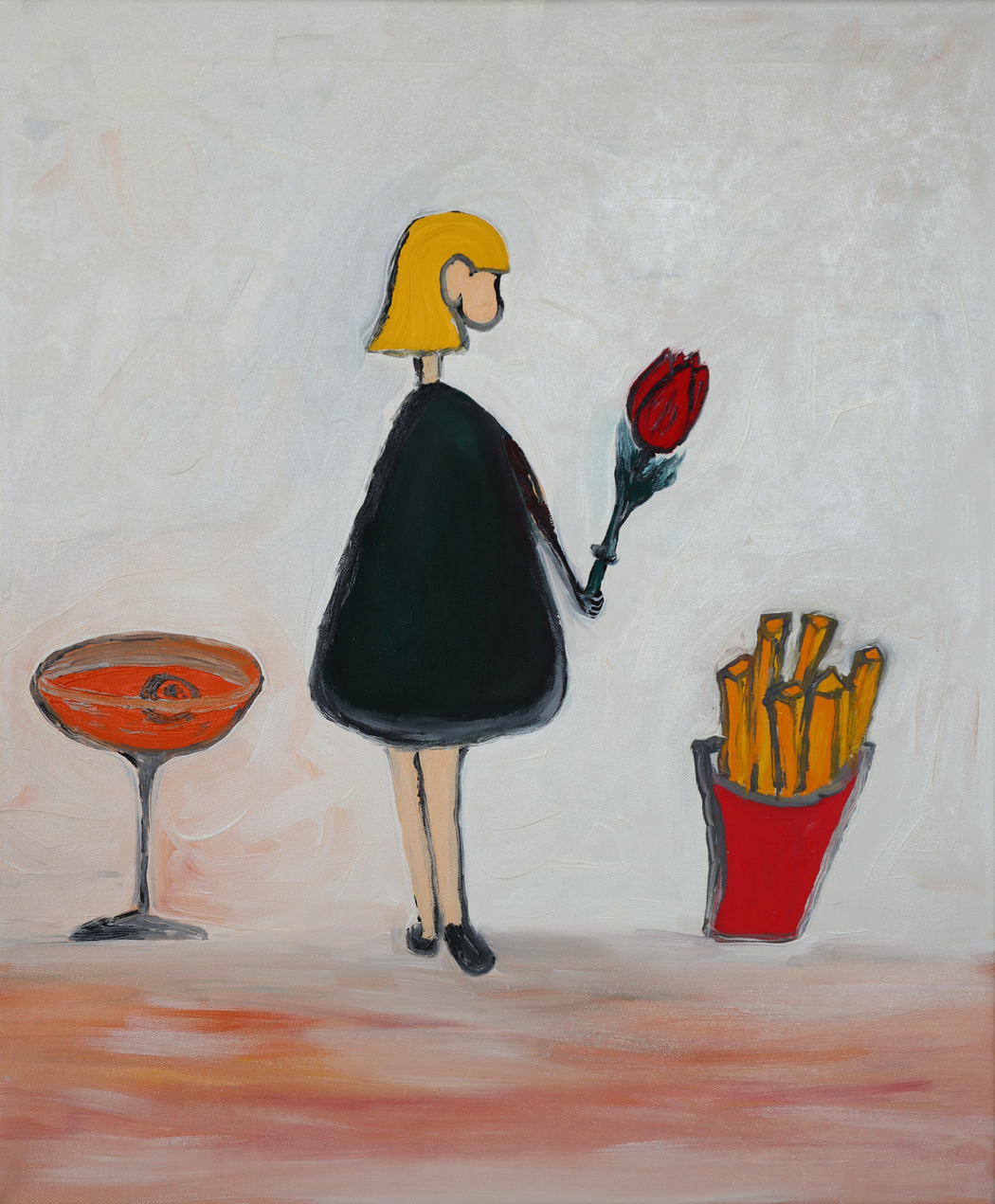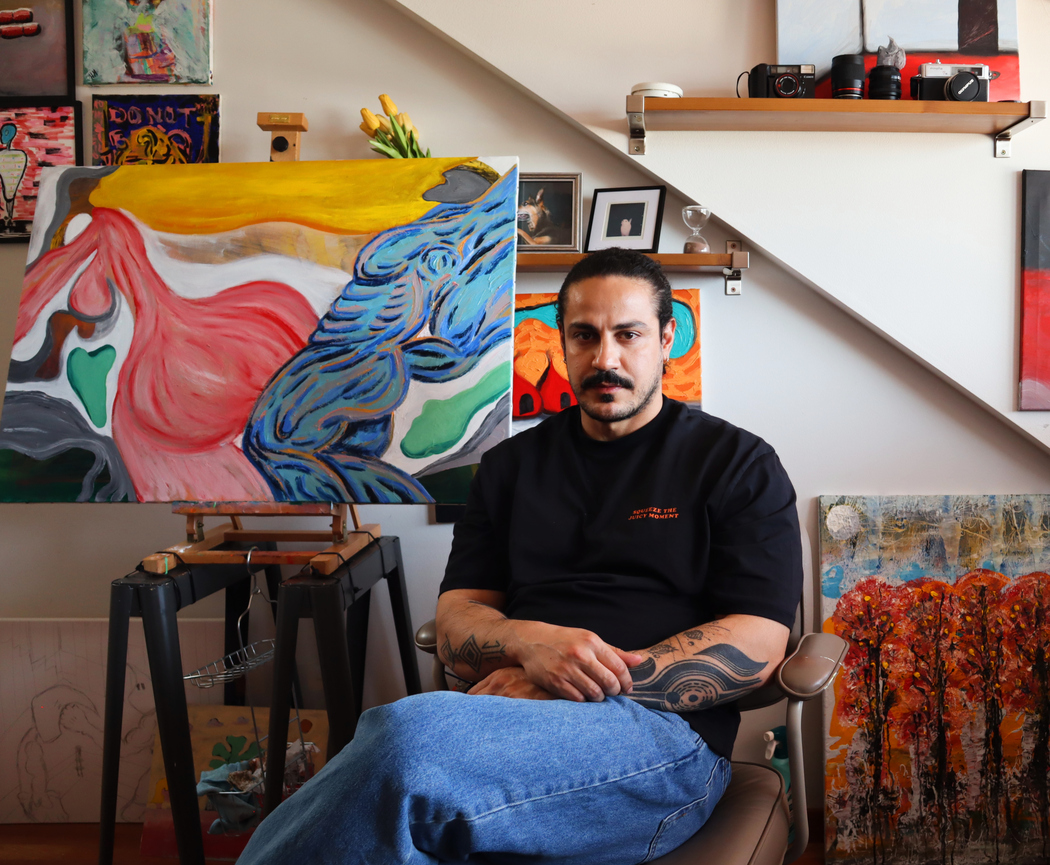Abdessamad Hassimi
Year of birth: 1988.
Where do you live: Helsinki, Finland.
Your education: Master’s in applied mathematics and computer science.
Describe your art in three words: Symbolic. Alchemical. Introspective.
Your discipline: Contemporary Art with a focus on emotion, symbolism, and inner alchemy.
Website | Instagram
Your background combines both art and science. How do these two worlds influence each other in your creative process?
To me, art and science are not separate realms, but rather mirrors of each other. Science seeks truth through logic, observation, and structure. Art, on the other hand, reaches for truth through intuition, emotion, and symbolic language. My creative process exists somewhere in between. Science grounds me by giving me tools to understand systems and patterns, while art is born from the emptiness—the pause before thought—that allows something unexpected to surface.
I believe that the most profound creative act begins with an empty mind. In that silence, something extraordinary can happen: an idea emerges, not from reference or repetition, but from the raw, unshaped infinite. That moment is, in my view, a real form of magic—not ritualistic or mystical in the traditional sense, but the mental magic of pure creation. It is the mind’s ability to pull something entirely new out of nothing, and to make it visible, shareable, and alive. That is a form of transformation as real as any chemical reaction.
Art, especially painting, remains one of the last places where true freedom exists. There are no algorithms or rules—only choices made in the moment, guided by instinct, feeling, or nothing at all. In that way, painting becomes like pulling a rabbit from an empty hat: improbable, pure, and absolutely real. Art and science both participate in this act of transformation, though they speak different dialects of the same universal mystery.
What inspired the Giants of the Cosmos series, and how did the idea first come to you?
The idea came quietly, from a place I now protect carefully—mental silence. I don’t begin with a story or a sketch. Instead, I start by emptying the mind, and from that stillness, something begins to rise. One day, the question appeared: What if emotions had mass? What if belief could take form, like a planet or a force of nature? That moment became the seed of Giants of the Cosmos.
This series gives form to what we usually consider intangible—power, hesitation, longing, and destruction. These works are not illustrations of events. They are physical embodiments of psychological and emotional tension. As artists, we are not simply makers. We are translators of the unseen.
In the space of painting, there are no scripts, no expectations, only the act of turning a shapeless sensation into something others can perceive. That process—pulling something out of the void and giving it presence—is the very definition of creative magic. Giants of the Cosmos is not a fixed message. It is a living and evolving question.
 Abdessamad Hassimi | Smoke and silence | 2024
Abdessamad Hassimi | Smoke and silence | 2024
Many of your works depict faceless figures and surreal environments. What do these elements represent for you?
Faces offer answers too quickly. They suggest identity, emotion, and narrative. By removing them, I remove assumptions. My figures are not specific individuals but rather states of being—transient, universal, and evolving. Leaving them faceless allows the viewer to project themselves into the work or experience the image without immediate labels.
The surreal environments they inhabit reflect our interior worlds, those vast psychological terrains we traverse daily but rarely name. These spaces are shaped by memory, instinct, trauma, and longing. They are not fantasy to me. Instead, they are hyper-real and emotionally true—geographies that can only be mapped through abstraction.
Both the figures and the spaces emerge from the same source: the quiet, generative space of the empty mind, where forms remain fluid and meaning is still taking shape. That is where I paint from. That is where the raw material lives.
You mention the tension between progress and wisdom. Do you see art as a way to bridge that gap?
Yes, I do. I believe art is one of the few remaining spaces where we are allowed to slow down and engage with questions without rushing to resolve them. Progress tends to favor speed, templates, and repetition. Wisdom, by contrast, requires stillness, ambiguity, and reflection.
When art is created from silence rather than trend, it becomes a bridge between the two. It doesn’t offer clear answers, but it gives form to uncertainty. It reminds us that not everything has to be efficient or immediately legible. Each brushstroke, each pause, and each unconventional decision resists the pressure to conform.
In this way, the creative act becomes an antidote to acceleration. It allows us to return to something fundamental in ourselves—the capacity to create freely, with full presence. That, to me, is the essence of wisdom.
 Abdessamad Hassimi | Back to the studio | 2024
Abdessamad Hassimi | Back to the studio | 2024
As someone who works professionally with AI, how do you see the role of artificial intelligence in the future of art?
AI is a powerful tool, and I use it regularly in my work. It can analyze, generate, and support in impressive ways. However, AI is fundamentally an accelerator. It processes information through speed, pattern recognition, and prediction. It does not enter silence. It does not hesitate before an idea. It does not long for anything unknown.
The human mind, in contrast, is a decelerator of data. The universe, from the smallest particle to the largest star, moves at incredible speed. Yet the mind slows this flow just enough for us to observe, to feel, and to reshape it into meaning. This is the power of consciousness—it turns motion into stillness, and time into experience.
I am not afraid of AI replacing artists. What I do fear is that we may forget how to be artists ourselves. The more we rely on pre-trained outputs and ready-made solutions, the more we risk losing our ability to create from nothing. That is the real danger—not replacement, but forgetting the magic of origin. Art is not about polish or efficiency. It is a sacred act of pulling from the void and making it real. Only the human mind can do that.
Giants of the Cosmos explores themes of control, faith, and emotional inertia. Are there any personal experiences that shaped these themes for you?
Absolutely. These themes come directly from personal experience—from navigating cultural differences, shifting belief systems, and confronting identity in unfamiliar places. I have found myself in moments of uncertainty where I didn’t know whether to trust, resist, surrender, or speak up. These internal struggles left deep impressions.
Over time, I began returning to silence. Not as a retreat, but as a practice of awareness. In that space, the ideas and forms started to emerge. The figures I paint often carry postures of tension, collapse, or confrontation. They are physical manifestations of emotional dilemmas. I never plan these narratives, but my body remembers, and the memory finds its way into the work.
Each piece is a response rather than a statement. Through gesture, posture, and presence, I try to give shape to the unseen forces that govern the inner life. These paintings become a way of turning the invisible into something shared.
 Abdessamad Hassimi | A girl | 2025
Abdessamad Hassimi | A girl | 2025
How has your move from Fes to Helsinki influenced your artistic vision?
The move from Fes to Helsinki was not a straight path, but a journey through many countries, languages, and cultural systems. Each place transformed me in different ways. I had to unlearn and relearn how to see. My temperament, aesthetic values, and worldview were continuously broken down and reshaped. I became a composite of everywhere I’ve lived.
Fes gave me saturation—an intensity of color, history, emotion, and structure. I was fortunate to grow up in a school program that offered formal artistic training from a young age through high school. There, I learned how to draw, paint, mix colors, and study the foundations of art history. That early education gave me not only technical skills but also discipline and visual sensitivity.
One of my earliest artistic passions was caricature, which fascinated me with its ability to reveal deep truths through distortion. It taught me how to exaggerate essence rather than chase surface-level realism. That influence still runs through my work today, where figures are symbolic, expressive, and often carry emotional weight rather than literal detail.
As I moved through different countries, I gained perspective and sensitivity to cultural nuance. Helsinki gave me space. Not only physical stillness, but mental clarity. It allowed all the intensity I had absorbed to settle into a new form. It became a place where I could synthesize the chaotic and the calm.
My work today is not abstract in the traditional sense. It is symbolic, often surreal, and increasingly metaphysical. The figures and environments I paint may appear recognizable, but they do not represent reality—they reflect inner landscapes, emotional weight, and philosophical tension. I am drawn to scenes and objects that feel theatrical or staged, but where each element carries deeper meaning. They are like still frames from a dream, where logic is bent, and everything becomes metaphor.
What emerged from this evolution is a deep trust in the empty mind. I now see that space as infinite and essential. As artists, we are not filling that space—we are retrieving from it. We bring back what has no form yet and shape it into something that can be seen, touched, or felt.
Whether the result is a painting, a sculpture, a sound, or writing, it is a true act of creation. It is not metaphor. It is not illusion. It is like pulling a rabbit from an empty hat—unlikely, but completely real. That, to me, is the essence of artistic freedom. It is a beautiful responsibility to make something from nothing.
And alongside that responsibility, there’s also joy. I genuinely enjoy the act of painting. When I finish a piece and look back at it, I want to feel that I had fun creating it—that I let myself play, explore, and enjoy the moment of making something that didn’t exist before. That feeling is just as important to me as any deeper concept behind the work.


Leave a Reply